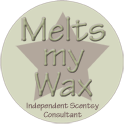We have had a lot of questions about chromosome deletions and thought we would post some very simplified and general info. This is from chromosomedisorder.org
Simply put, chromosomes are the structures that hold our genes. Genes are the individual instructions that tell our bodies how to develop and keep our bodies running healthy. In every cell of our body there are 20,000 to 25,000* genes that are located on 46 chromosomes. These 46 chromosomes occur as 23 pairs. We get one of each pair from our mother in the egg, and one of each pair from our father in the sperm. The first 22 pairs are labeled longest to shortest. The last pair are called the sex chromosomes labeled X or Y. Females have two X chromosomes (XX), and males have an X and a Y chromosome (XY). Therefore everyone should have 46 chromosomes in every cell of their body. If a chromosome or piece of a chromosome is missing or duplicated, there are missing or extra genes respectively. When a person has missing or extra information (genes) problems can develop for that individual's health and development. Each chromosomes has a p and q arm; p (petit) is the short arm and q (next letter in the alphabet) is the long arm. Some of the chromosomes like 13, 14, and 15 have very small p arms. When a karyotype is made (see below) the q arm is always put on the bottom and the p on the top. The arms are separated by a region known as the centromere (red in picture), which is a pinched area of the chromosome. The chromosomes need to be stained in order to see them with a microscope. When stained the chromosomes look like strings with light and dark 'bands'. Each chromosome arm is defined further by numbering the bands, the higher the number, the further that area is from the centromere.
A chromosomes deletion is when a part of a chromosome(s) has been deleted. A deletion can occur on any chromosome, at any band, and can be any size (large or small). What a deletion causes depends on how big a piece is missing and what genes are missing in the section (i.e. where the deletion is). Under chromosome analysis the section that is missing can usually be determined. However it is difficult to compare one child with a particular deletion to another with the 'same' deletion.
Remember that looking at the chromosomes is the big picture, like looking at an encyclopedia set from about 10 feet away. We are usually able to detect the deletion. Some are too small to see and other technologies can be used, but it is impossible to say at exactly what spot the deletion started and ended. So one individual might have a few more genes deleted than another individual with the 'same' deletion.
In the above example the area in the blue brackets is not present (deleted) in its pair designated by the red arrow. The other 22 pairs of chromosomes were normal (not shown).
1 month ago









0 comments:
Post a Comment